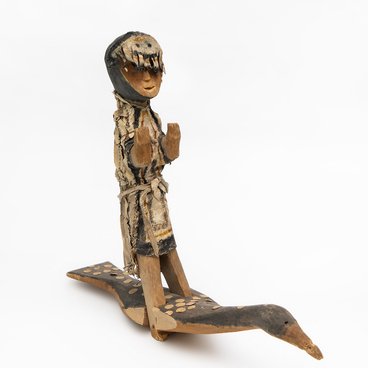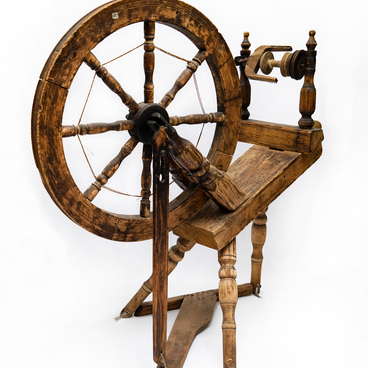The archaeological find presented at the exhibition is a hand-chopping tool. “Stone ax”, or “striker” — which is what a hand ax is often called, is an invention of primitive man, and the main tool of the Paleolithic era, used in a variety of cases replacing a knife, ax and pickaxe.
The hand ax from the museum’s exposition is a large object of an elongated oval shape with a rounded working edge and pointed edges. The handle is the butt, which has been sharply narrowed by knapping. The opposite surface has retained the natural edge of the pebble.
This hand ax was created from a large elongated pebble of tufoaleurolite (sedimentary volcaniclastic rock). Such a universal tool of primitive man was used for splitting, striking, and surface treatment. Hand axes spread in the Paleolithic era.
The earliest choppers were made of pebbles; much later humans mastered flint. The fact is that the rolled shape of the pebbles was convenient for grabbing them by hand. At the same time, the earliest such products, like the museum exhibit, were created by knapping. One, softer, stone served as a blank — the other, which belonged to harder rocks, was used for striking.
As the processing technique became more complex, a percussion tool began to be used. It played the role of a modern chisel: hitting it with another stone or a wooden mallet, it was possible to coordinate the force and direction of the blow much more precisely, the flake turned out to be long and thin.
Later, the pressing technique was mastered, which allowed the percussion tool to act as a chisel, removing excess material in thin layers. Hand ax greatly facilitated the life of ancient humans. Holding the ax by the blunt, then by the sharp end, it was possible to mash and grind vegetable food, scrape and peel the bark, crush nuts, separate roots and branches, loosen the ground in search of root crops, and kill small animals. Along with the hand ax, flakes from stones turned out to be at the disposal of a person — various points, punctures, ancient scrapers.
This almond-shaped
instrument, knapped on both sides, thickened and rounded at the base, was found
near the village of Nizhni Halby in the Komsomolsk district of the Khabarovsk
Territory.




